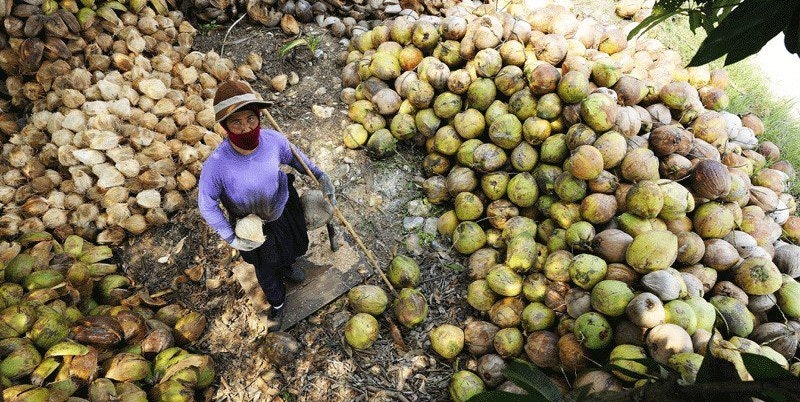Information portal launched to help fight pests and diseases of coconut

A new information portal called Cocopest has been launched to help in the fight against pests and diseases of coconut – a crop that in 2020 was valued at USD$65 billion.
The resource was developed by CABI and financially supported by the International Coconut Community (ICC).
Cocopest brings together information from journals, books and abstracts in one central place, and offers images, taxonomic data, information on the distribution of the pest and diseases as well as symptoms, prevention and control, detection and inspection. There is also an ‘expert’ section which can connect people with experts from regional diagnostic networks.
The portal currently features 20 datasheets with details on 13 insects, two bacteria, two fungi, one virus and two mites that can impact upon coconut production. These include the coconut rhinoceros beetle (Oryctes rhinoceros) and the Guam Haplotype coconut rhinoceros beetle, African rhinoceros beetle (Oryctes boas), Bogia Coconut Syndrome (BSC), Phytoplasma causing Lethal Yellowing Disease (LYD) and Phytophthora palmivora.
Coconut is grown on about 12.25 million hectares in more than 90 countries and is consumed by people in more than 110 countries worldwide. The 20-member countries of the ICC occupy 87 percent of the global total area and produce around 86 percent of the world’s coconut supply.
The ICC member countries include eight Asian countries: India, Indonesia, Malaysia, Philippines, Sri Lanka, Thailand, Vietnam and Timor Leste; nine Pacific countries: Federated States of Micronesia, Fiji, Kiribati, Marshall Islands, Papua New Guinea, Samoa, Solomon Islands, Tonga and Vanuatu; one Caribbean country: Jamaica; one African country: Kenya; and one country in South America: Guyana.
PHOTO: The global coconut market is valued at USD$65 billion in 2020 but the crop is at risk from pests and diseases highlighted by the CABI-derived Cocopest information portal. Photo: ICC
Read more about how CABI is strengthening its partnerships world-wide, in New AG International’s Nov-Dec 2022 issue, here.
Read the entire NOV/DEC 2022 issue of New AG International, free to view here.
Read the SEP/OCT 2022 issue of New AG International, free to view here.